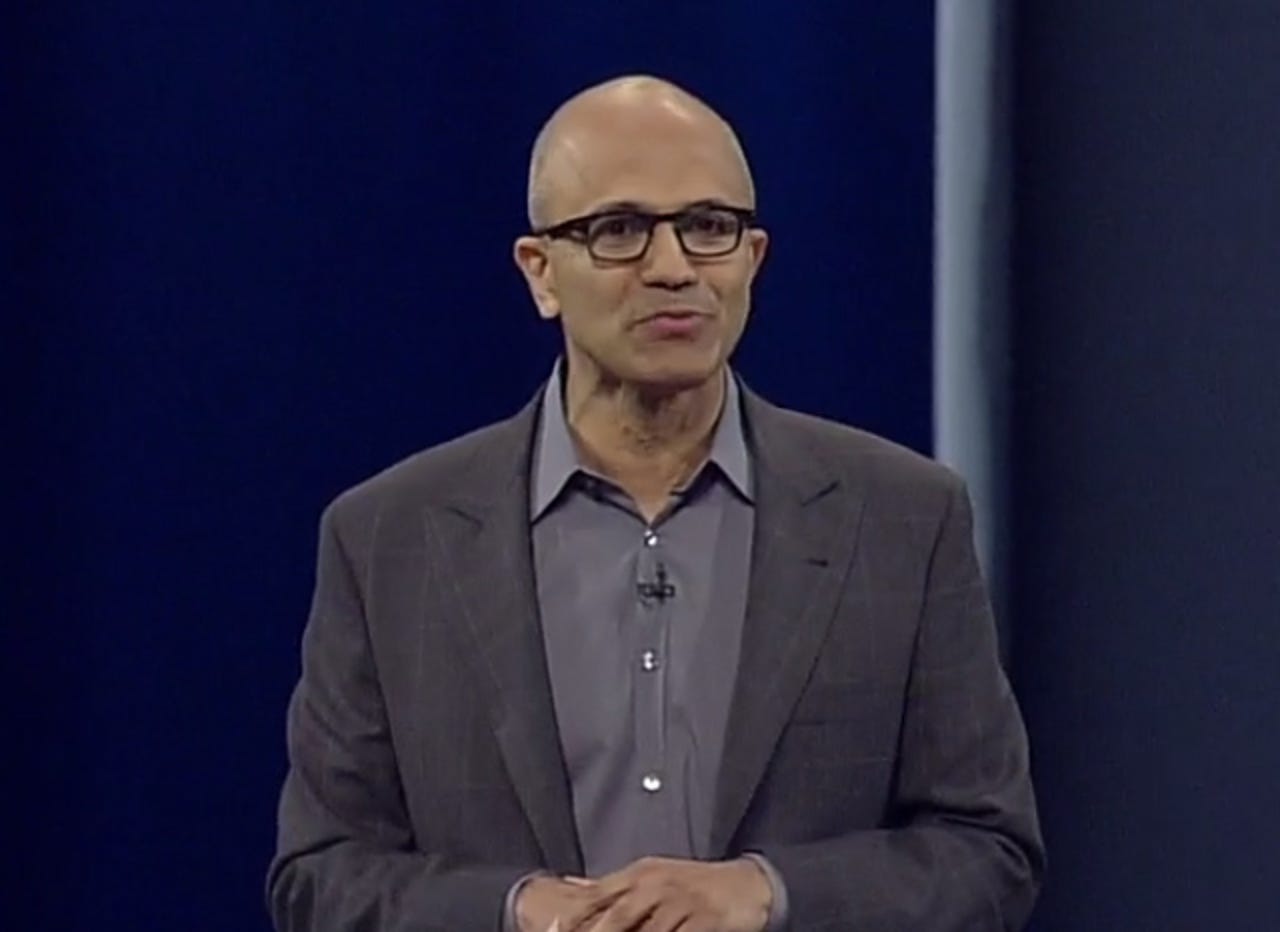Five things I learned from Microsoft CEO Satya Nadella


After combing through the transcript of our 30-minute Q&A, I realized I had learned several things about Microsoft's strategy that I hadn't fully gleaned before yesterday.
exclusive
Here's my top five list:
1. Windows mobile is different from Windows Mobile. A bit confusing? Yes. Important distinction? Very much so. Windows Mobile is the name of the operating system that will be inside Windows Phones and small ARM- and Intel-based tablets running Windows 10. Windows mobile is a much bigger category.
In Nadella's definition, the HoloLens, the Band, Surface tablets and Lumia Phones, not to mention any versions of these mobile products built by OEMs now or in the future, are all part of the Windows mobile ecosystem. Nadella also considers the growing stable of Microsoft apps and services that run on Windows Mobile, Windows 10 for tablets, iOS and Android devices to be part of the Windows mobile ecosystem. Windows Phones are currently a small piece of a small Windows mobile ecosystem. Microsoft is hoping, but not totally relying on them becoming a bigger piece in the future.
2. "Platform" isn't equivalent to "cross platform" for Microsoft. When Nadella talks about itself as a "platform" company -- as in "productivity and platforms" -- he isn't talking about Microsoft making its software and services available on other companies' platforms. While going cross-platform is definitely part of the new Microsoft's DNA, what Nadella means when he says "platforms" are Microsoft's own three core platforms: Windows, Azure and Office. Nadella's goal is for Microsoft to continue to be a compelling platform vendor upon which other hardware, software and service companies will base their products.
see also
3. HoloLens version 1 is going to focus on the business/enterprise market. While it's been Minecraft and augmented TV/movie demos of HoloLens that have gotten a lot of oohs and aahs, Nadella is expecting the first version of Microsoft's augmented-reality headset to be bigger in the business and enterprise space at the outset. Nadella is the one who guided the HoloLens team to expand the team's vision for HoloLens beyond gaming and into business scenarios months back. It looks like fostering the development of business apps and services will be key to Microsoft's initial HoloLens launch, whenever that ends up being.
4. Bundling is back, bigtime. Nadella is sweet on suites of apps and services. Microsoft had greater success with its business apps once it packaged them as the Office suite than when it was attempting to sell them standalone. Look at the proliferation of suites at the company over the past year or two. Office 365, Enterprise Mobility Suite, Operations Management Suite, Azure Stack, Cortana Analytics Suite. In addition to bundling standalone apps together, Microsoft simultaneously is looking for opportunities to bundle standalone functionality into a single product (see GigJam). And Cortana/Bing is being integrated into just about everything.
5. Being ahead of the customer-demand and competitor curves is key to survival. "One big mistake we made in our past was to think of the PC as the hub for everything for all time to come," Nadella conceded in our conversation yesterday. Instead, the high-volume device became the six-inch phone. Companies are only relevant when the are ahead of the curve, looking for use cases that are different from, not equal to, what their competitors are offering -- and ahead of what the majority of users are requesting. There's a reason Continuum, Microsoft's technology for easing mobile-PC transitions with Windows 10, and for connecting Windows Phones to monitors and keyboards so phones can act like PCs, is Nadella's self-professed favorite Windows 10 feature.